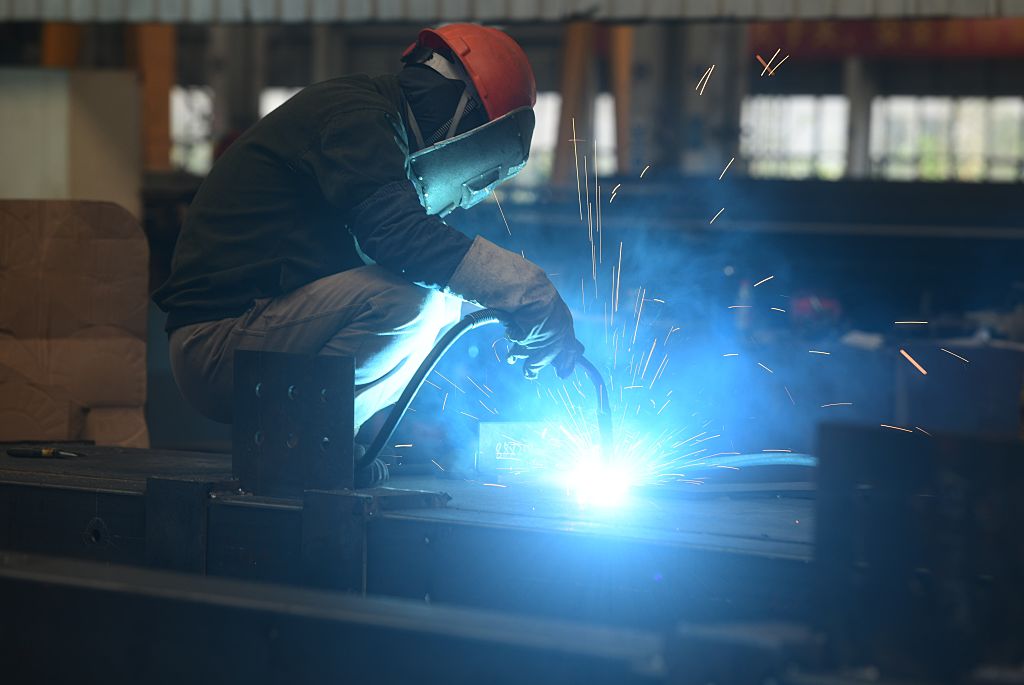China’s manufacturing activity shrank for a third straight month in June, though at a slower pace, as increases in new orders, purchasing volumes and supplier delivery times signalled that policy support rolled out since late last year is taking effect.
But business sentiment remains subdued, Monday’s survey showed, with employment, factory gate prices and new export orders still languishing, and keeping alive calls for even more stimulus as authorities deal with U.S. President Donald Trump’s tariff onslaught and chronic weakness in the property sector.
The National Bureau of Statistics purchasing managers’ index (PMI) rose to 49.7 in June from 49.5 in May, matching the median forecast in a Reuters poll but remaining below the 50-mark that separates growth from contraction.
“Two months of successive improvement, that’s a decent reading given June was the first full month without Trump’s prohibitive 100%-plus tariffs,” said Xu Tianchen, senior economist at the Economist Intelligence Unit.
“There is still evidence of frontloading in trade, but the tariffs are lower now and manufacturers are preparing to ship holiday season goods,” he added.
The new export orders sub-index remained in contraction for a 14th straight month in June, inching up to 47.7 from 47.5 in May, while employment diverged from other indicators by deteriorating further. However, new domestic orders rose to 50.2 from 49.8, and purchasing volumes jumped from 47.6 to 50.2 — offering policymakers some hope that domestic demand may be starting to recover.
Zichun Huang, China economist at Capital Economics, said the PMIs suggested the world’s second-largest economy had regained some momentum over the past month, but warned tensions with the West would continue to squeeze its exports and there were still signs of deflationary pressures.
The non-manufacturing PMI, which includes services and construction, grew to 50.5 from 50.3.
Activity in the food and beverages, travel, hospitality and logistics sectors fell this month, NBS senior statistician Zhao Qinghe said in a statement. However, this drag was offset by a pickup in the construction PMI, which rose to a 3-month high of 52.8, Capital Economics’ Huang said.
“Fiscal support looks to have continued to support infrastructure spending,” Huang added, but cautioned that “a fading fiscal tailwind is likely to slow activity in the second half of the year.”
MORE STIMULUS
Uncertainty also lingers among factory owners, as the business outlook index – which normally moves in line with the headline PMI – dropped in June and suggested producers were waiting on a more durable trade deal to a fragile framework agreed between Beijing and Washington earlier this month.
That puts pressure on policymakers to roll out more support measures, as the government cannot afford for China’s vast manufacturing sector to stagnate or shrink, if its ambitious 2025 growth target of “around 5%” is to be met.
Profits at China’s industrial firms swung sharply back into decline in May, which officials attributed to weak demand and falling industrial product prices.
Policymakers are confident they can push ahead with reforms launched late last year to transition China’s economy from a manufacturing-led model to a consumer-driven one, Premier Li Qiang told delegates at World Economic Forum and Asian Infrastructure Investment Bank meetings last week.
Such a shift in the engines of growth, which economists say is crucial to securing China’s future, could be progressed while maintaining strong growth, Li said.
But economists say the transition could take years, and that reform typically comes at the cost of a more subdued economy in the short term.
“Exports are expected to decelerate in the second half of the year, and domestic deflationary pressures will intensify,” said Dan Wang, China director at Eurasia Group, who expects more stimulus in coming months.
“Household consumption cannot be a real short-term driver, but fiscal spending in things like infrastructure can deliver the kind of growth required to hit this year’s target.”
(Reuters)














